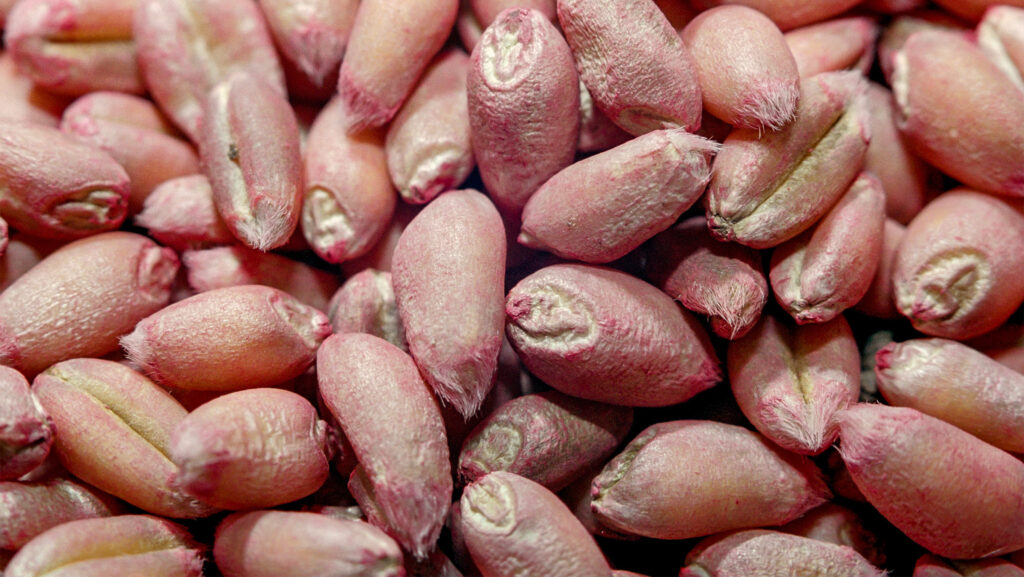Check old wheat seed before drilling this autumn
 © Certis/courtesy of Blackthorn Arable
© Certis/courtesy of Blackthorn Arable Growers are advised to get last season’s wheat seed tested before drilling it this autumn, after the wet winter resulted in some farms having significant amounts left unused.
If seed has been stored in a modern, dry, rodent-free grain store, germination loss may be only 10 to 20%, but in poorer conditions losses can be much higher, warns one expert.
Therefore, there is a risk of farmers drilling the wrong rate, thereby reducing the yield potential of next season’s crops.
See also: Why gene editing could help growers practising regen ag
Seed merchants offer germination tests for customers and Niab will test germination, thousand grain weight and produce a seed rate chart, to ensure farmers can meet target plant populations, for about £60 a sample.
Seed treatments
For farmers concerned that seed treatments may no longer be effective, Adam Nears, seed expert at Belchim, says that active substances remain effective when sown within 12 months of treatment.
In addition, conventional seed treatments, such as single-purpose dressing (SPD), have no negative effect on seed viability.
If tests reveal germination to be poor, growers should not be tempted to dump or burn treated seed, as regulations stipulate that it must be disposed of by a specialist contractor, but this comes at a price.
“By far the safest and most economical way of dealing with any over-yeared treated seed is to plant it, even if you need to use a very heavy seed rate.”
Treated seed cannot receive additional treatments, so if wheat seed only has a single-purpose dressing, it is best to plant it as a first wheat, to avoid the threat from take-all.

